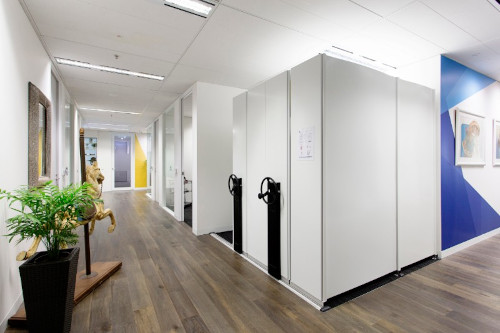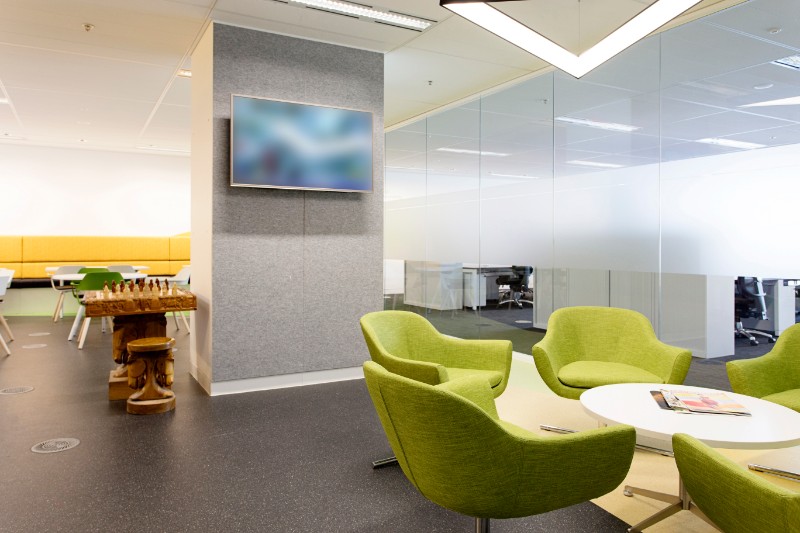How to build a disaster recovery management plan to ensure your business operates unimpeded
Recent events have shown us that you can’t anticipate disasters or workplace disruptions. Even something that seems as innocuous as a common cold has the power to devastate businesses and communities without warning, leaving us in panic and clambering for solutions.
If you are unprepared then your reactions are limited to scrambling, panic and chaos, however, if you have prepared a strategy on paper, discussed it with your team and researched options for the worst, you can respond with calm command, get moving early and reduce your losses.
Now is the right time to get your disaster recovery management plan in place. Knowing what your options are can make a drastic difference to your recovery as well as your future business strength.

Businesses have certainly seen some unprecedented events unfold over the past few decades, with the global restrictions from COVID being the most recent. One option that really helped businesses stay connected and able to scale up and down to meet their needs through this most recent disaster was coworking spaces. Coworking spaces can provide flexibility and security to businesses with suburban locations that can be flexible, accessible and affordable if central business districts are shut down.
“With flexible workspace, [employees] can reduce or expand at the drop of a hat. It very much depends on what’s happening in the economy and its very turbulent times,” said Jenny Folley, founder and chief executive officer of @WORKSPACES.
With so many people unable to work from home effectively during the COVID-19 lockdowns, coworking spaces were the perfect hybrid working option, offering a productive balance between home and office environments. Because of this, coworking spaces enjoyed extraordinary growth at a time many businesses were forced to shut down.
With a detailed emergency and recovery plan in place, businesses can continue to operate through crises. While you won’t know what dangers lie ahead, creating a disaster recovery management plan with flexible options enables you to shift your focus at a moment’s notice and keep your business on its feet through adversity.
Why a disaster recovery management plan is important
Disaster recovery management plans ensure the safety of your staff, as well as keep your business operational during disruptions.
Studies show that 40% of small businesses close after a disaster and even among those that are able to stay afloat, 25% who struggle through the crisis will close within a year. Being ready curbs the risk of business failure and gives you a better footing when tough times roll around.
In an emergency situation, you and your staff may not have access to the office, equipment or even each other, making it difficult to keep operations running. How can you continue running your business when you can’t even email your staff member to ask them for reports because their internet connection is unstable? A plan to combat extraordinary circumstances such as a natural disaster or a global pandemic will bring staff together and enable them to continue their work.
Preparing for tough times ensures there are options for staff to fall back on and helps you focus on the core needs of your business and continue operating at full capacity, no matter the circumstances.
What needs to be addressed in your disaster recovery management plan?
Good disaster recovery management means you factor in ways to continue operation, remain connected and stay competitive. This may require changing locations, shutting down some sectors or thinking outside the box to meet the current demand. Your plan will take into account multiple strategies, pathways and an array of restrictions you may encounter in the unlikely event of a disaster.

Some items to include in your disaster recovery management plan:
1. Urgent jobs and ways these can be completed in different locations
Identify a list of core jobs that are critical to keeping your business running and chart ways these can be achieved remotely. While all jobs are valuable, some departments or areas of the business might not be as relevant during disastrous events. Find ways to redeploy your workforce so that other departments that need more people power can be supported.
2. Essential office equipment
Once you’ve made a plan to make sure your staff are safe and able to work, you need to outfit them with what they need to accomplish their tasks. Include scenarios where there will be reduced access to the office and its equipment. Make a list of what they need to continue producing quality work and stay connected to the rest of the team (i.e. laptops, secure connection, access to software etc.).
Remember to keep this within your budget as revenue and budget will likely be strained in a disaster situation.
3. Alternate office spaces or work from home solutions
Central business districts and cities may not be accessible during an emergency. Well before you get into an emergency situation, research other office alternatives including the price, size and flexibility to move and scale as you need.
Some options you can start with include:
• Coworking office spaces
• Satellite offices
• Other businesses that have available space
• Work from home if this will be a lucrative solution
Coworking spaces are a great option for your team as they have short term contracts, are equipped with everything needed and offer different locations for maximum convenience.
4. A realistic emergency budget
During emergencies, getting access to enough funds may be a challenge. Set aside an emergency fund to cover urgent expenses.
You can stay one step ahead by itemising your equipment and their replacement costs to get a gauge for what kind of budget you might need to get going again. This research can also double as a ready list for your insurance company for a quicker turnaround on your claim.
5. Your emergency response plan
Make sure your emergency response protocols are communicated with your entire team in a way that is easy to follow and quick to read. Place step by step instructions in a shared drive and provide illustrated instructions that are quick and easy to follow that direct staff on what steps to take in the event of a threatening situation such as earthquake, bomb threat, fire etc.
Make sure that you have consistent and reliable data backup systems and provide clear instructions on how to reboot systems in case anything happens to your equipment.
3 reasons coworking spaces are ideal in maintaining business continuity (even when disaster strikes)
Coworking spaces offer more than just a desk or cubicle. They’re a great solution to disaster situations that are flexible enough to fit your business needs. Here are three items in particular that make coworking spaces ideal for your business disaster recovery plan.
1. Coworking spaces can be utilised as satellite offices
Working from home isn’t for everyone but during tough times, the office isn’t for everyone either. This is especially true for staff members who are unable to get to work because their usual commute has been restricted or cut off.
A good middle-ground for the two is a coworking space. Working from home can come with a host of distractions and may not have the infrastructure or space needed for productivity. Coworking spaces have the equipment your staff needs, their multiple locations make them readily accessible to people regardless of their residential location and they offer a conducive office environment.
2. Coworking spaces boost company resilience
Being able to bounce back from hardships and power through difficult situations are important qualities for any business, toughing it out is something you need to learn. Mistakes, learning curves and overcoming adversity are all part of being a business owner and running a successful enterprise. Resilience plays a big part in how you keep your business going and how you deal with emergencies and mistakes.
Business continuity is the ability of a business to continue to function in spite of (and also to avoid) disruption. Resilience powers that ability by pushing you and your employees to keep working and finding solutions and alternatives in any circumstance.
3. Coworking spaces create a sense of community
Because you’re working so closely with other businesses, you’re able to get to know them more and form bonds. You’re not bound to just your business and your staff, you’re in an environment where you can create genuine friendships and partnerships with other owners or employees from other businesses and other industries.
From these relationships, help often follows. Proximity doesn’t just promise a passing hello, but it also comes with aid in times of emergency and a sense of community. Coworking spaces are important because they help people come together and bolster morale despite setbacks, motivating teams to focus on business success and recovery.

When it comes to disaster recovery management, getting a plan in place before the disruption occurs is essential. Think ahead to what strategies are going to work for your business model, your offering and your team members. Not everyone can work from home so you need to have viable options ready for circumstances when travel is restricted. Make a solid plan that includes the provision of equipment, personpower for departments that are in urgent need of support and a connected community and interaction to boost morale. Coworking spaces are a great place to find all of this as they foster community, resilience and accessibility.
At @WORKSPACES, we offer flexible workspaces that can help you with your disaster recovery management plan. Book an office tour and we’ll show you how our facilities are ideal for your business no matter the circumstance.



